|
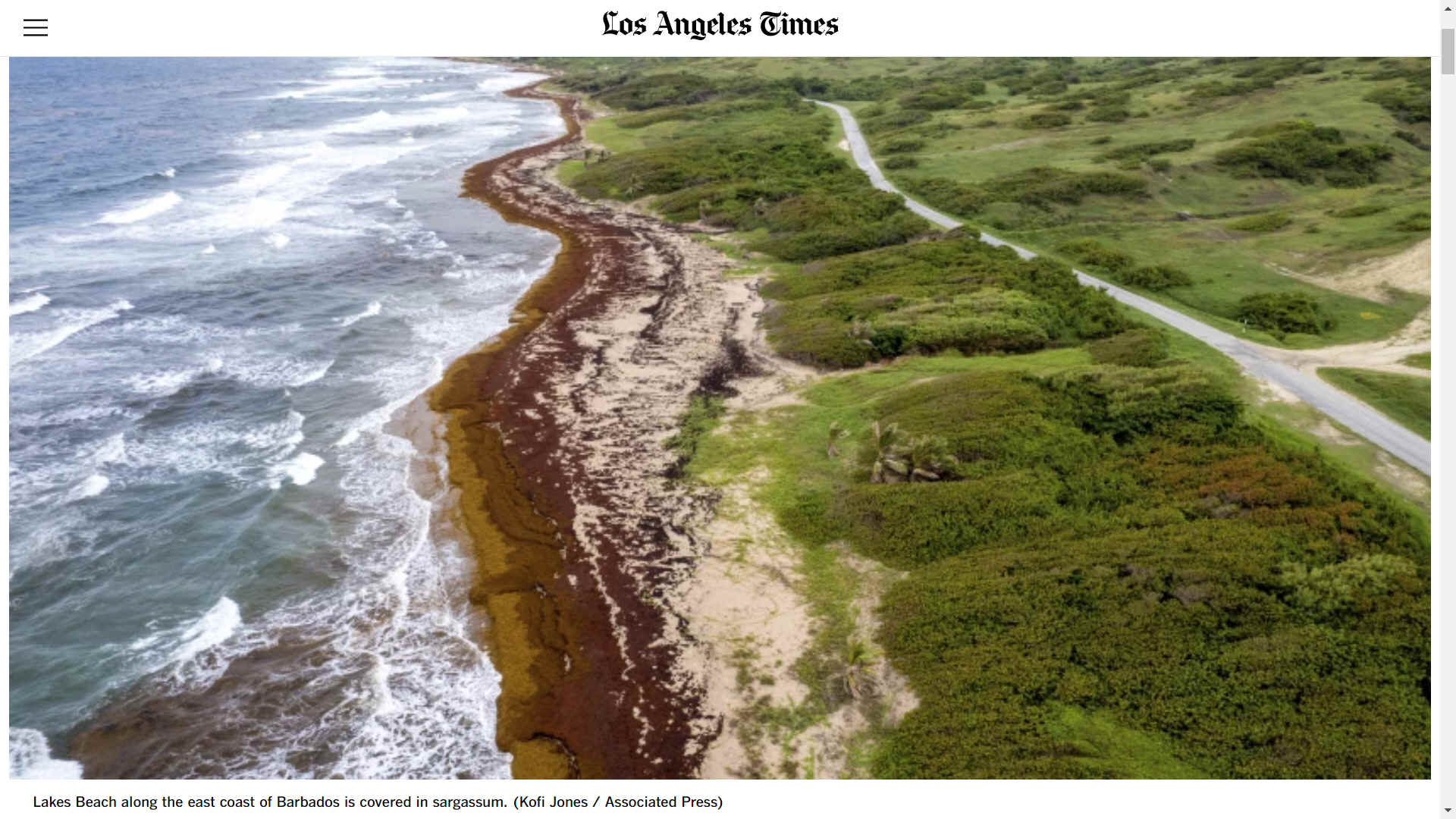
THE
SARGASSUM CRISIS - A beach along the Barbados coast is covered in sargassum
LOS ANGELES TIMES 3 AUGUST 2022 - RECORD AMOUNT OF SEAWED CHOKES CARIBBEAN BEACHES & SHORELINE
SAN JUAN, Puerto Rico — A record amount of seaweed is smothering Caribbean coasts from Puerto Rico to Barbados as tons of brown algae kill wildlife, choke the tourism industry and release toxic gases.
More than 24 million tons of sargassum blanketed the Atlantic in June, up from 18.8 million tons in May, according to a monthly report published by the University of South Florida’s Optical Oceanography Lab, which noted it as “a new historical record.”
July saw no decrease of algae in the Caribbean Sea, said Chuanmin Hu, an optical oceanography professor who helps produce the reports.
“I was scared,” he recalled feeling when he saw the historic number for June. He noted that it was 20% higher than the previous record set in May 2018.
Hu compiled additional data for the Associated Press that showed sargassum levels for the eastern Caribbean at a near record high this year, second only to those reported in July 2018. Levels in the northern Caribbean are at their third-highest, following July 2018 and July 2021, he said.
Scientists say more research is needed to determine why sargassum levels in the region are reaching new highs, but the United Nations’ Caribbean Environment Program says possible factors include a rise in water temperatures as a result of climate change and nitrogen-laden fertilizers and sewage waste fueling algae blooms.
“This year has been the worst year on record,” said Lisa Krimsky, a researcher and faculty member with Florida Sea Grant and a water resources regional specialized agent at the University of Florida. “It is absolutely devastating for the region.”
She said large masses of seaweed have a severe environmental impact, with decaying algae altering water temperatures and the pH balance as well as leading to declines in
seagrass, coral reef and sponge populations.
“They’re essentially being smothered out,” Krimsky said.
The “golden tide” also has hit humans hard.
The concentration of algae is so heavy in some parts of the eastern Caribbean that the French island of Guadeloupe issued a health alert in late July. It warned some communities about high levels of hydrogen sulfide emanating from huge rotting clumps of seaweed, which can affect people with respiratory problems such as asthma.
The Biden administration declared a federal emergency after the U.S. Virgin Islands warned last month of “unusually high amounts” of sargassum affecting water production at a desalination plant near St. Croix that is struggling to meet demand amid a drought.
“We’re consuming as much as we can produce right now,” said Daryl Jaschen, director of the islands’ emergency management agency. “We’re very concerned about that.”
In addition, the U.S. Virgin Islands’ electricity-generating station relies on ultra-pure water from the
desalination plant to reduce emissions monitored by the U.S. Environmental Protection Agency. The loss of such water would force the government to use a type of diesel fuel that is more expensive and in limited supply, officials said.
Experts first noted large amounts of sargassum in the Caribbean Sea in 2011, which Hu and other scientists think were created by stronger-than-normal winds and currents. The problem has worsened as clumps multiplied, fueled by nutrients and strong sunlight.
“In the tropical Atlantic, everything was right,” Hu said. “Everything grows fast.”
Sargassum in moderation helps purify water, absorb carbon dioxide and is a key habitat for
fish, turtles,
shrimp,
crabs and other creatures. But it is bad for tourism, the economy and the environment when too much accumulates just offshore or on beaches.
A carpet of brown algae recently surrounded an uninhabited island near the French Caribbean territory of
St. Martin that is popular with tourists, forcing officials to suspend ferry service and cancel kayaking and snorkeling tours. The normally translucent waters around Pinel Island turned into a prickly brown slush.
On Union Island, which is part of St. Vincent and the Grenadines, the seaweed invasion has forced some resorts to close for up to five months in the past.
Masses of sargassum also have strangled the Caribbean’s fishing industry. It damages boat engines and fishing gear, prevents fishermen from reaching their boats and fishing areas, and leads to a drop in the number of fish caught. Barbados has been especially hit hard since flying fish make up 60% of the island’s annual landed catch, according to the University of the West Indies.
An overabundance of sargassum was blamed for the recent deaths of thousands of fish at the French Caribbean island of
Martinique. It also has activists concerned about the plight of endangered turtles, with some dying at sea entangled in seaweed or unable to lay their eggs given the mat of algae covering the sand.
In the Cayman Islands, a thick carpet of sargassum had prompted officials to launch a trial program in which crews pumped more than 2,880 square feet of seaweed out of the water. But on Tuesday, the government announced that it had suspended removal efforts because the level of decomposition made it impractical.
Other island nations have opted to use heavy machinery to remove seaweed from the beach, but scientists warn that that causes erosion and could destroy the nests of endangered turtles.
Attempts to use sargassum as fertilizer, food, biofuel, construction material or medicinal products continue, but many Caribbean islands are unable to remove the vast amounts of the seaweed because they are struggling financially and have limited resources.
Gov. Albert Bryan of the U.S. Virgin Islands said he asked President Biden to declare a federal emergency for the entire three-island territory, not just St. Croix, but that didn’t happen. Bryan said he is now trying to find local funds to clean beaches, “but a lot of things need money right now.”
Since 2011, large amounts of sargassum have invaded the Caribbean every year except 2013 — an anomaly that scientists believe may have resulted from a lack of nutrients and a change in wind strength and direction. And the record amounts reported in recent years are even more concerning for scientists and island governments.
“We don’t know if this is a new normal,” Krimsky said. “This has been devastating for over a decade.”
PUERTO
RICO - SARGASSUM
CRISIS
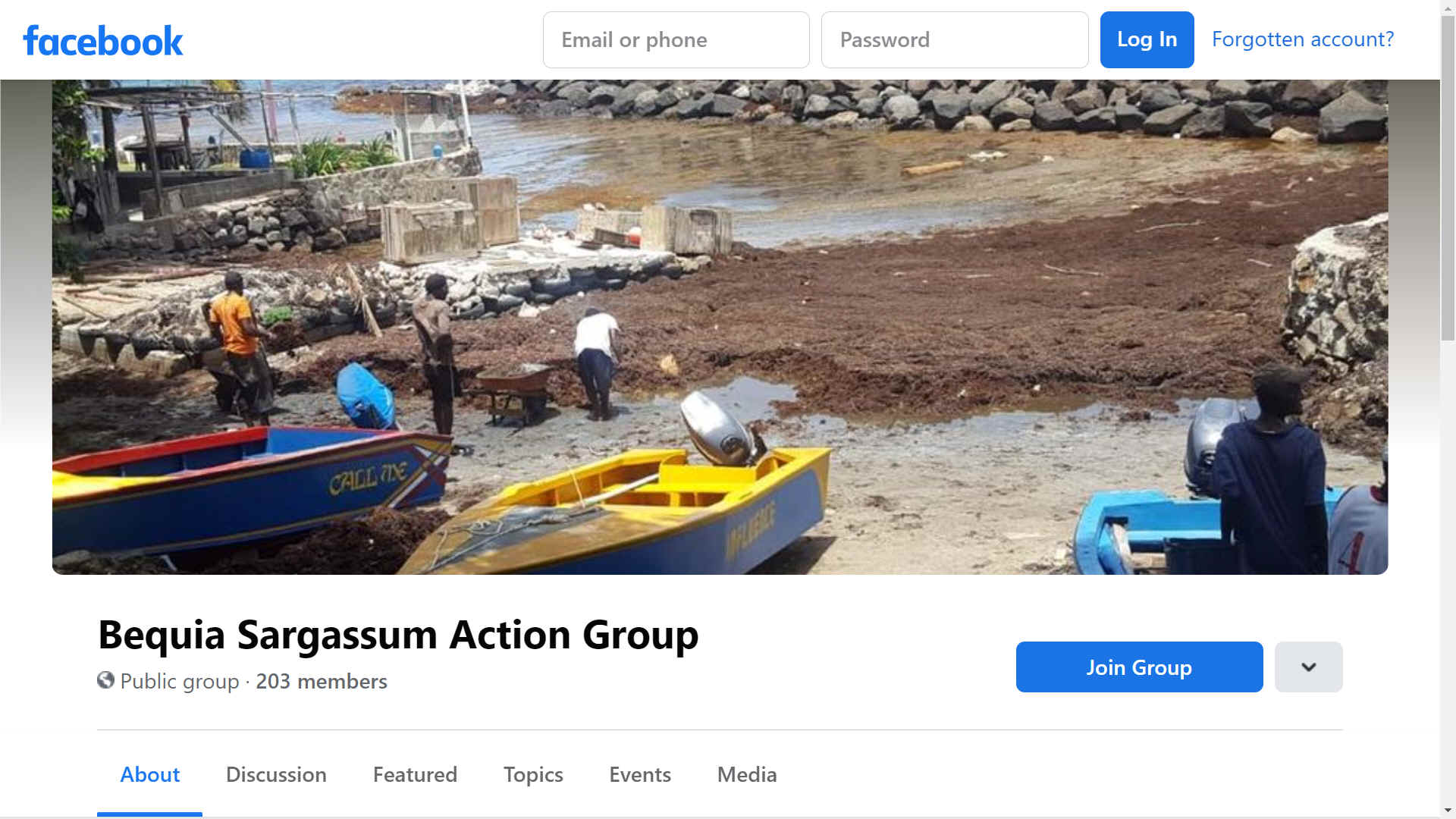
......
LINKS
https://www.latimes.com/world-nation/story/2022-08-03/record-amount-seaweed-choking-caribbean-shores
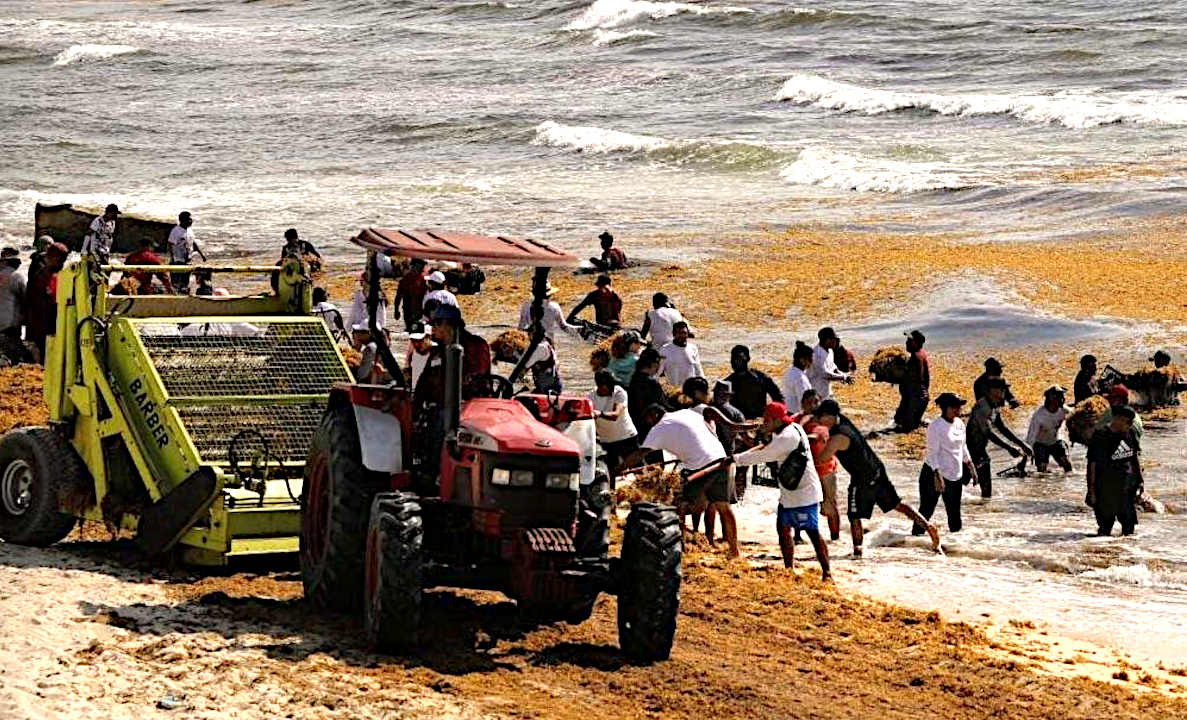
SARGASSUM:
Represents an immediate
threat to the economics of the Caribbean Islands, the
Gulf of
Mexico, and African West Coast, but is
also a potential asset if it can be economically harvested and used for,
among other things, fertilizer for agriculture: where
there is a world shortage.
BIOMASS - BUILDING
MATERIALS - CANCER
TREATMENTS - CLOTHING
& SHOES - CO2
SEQUESTRATION - COSMETICS
FERTILIZERS - FOODS - MEDICINES - MINERALS - PACKAGING - SUPPLEMENTS - VITAMINS
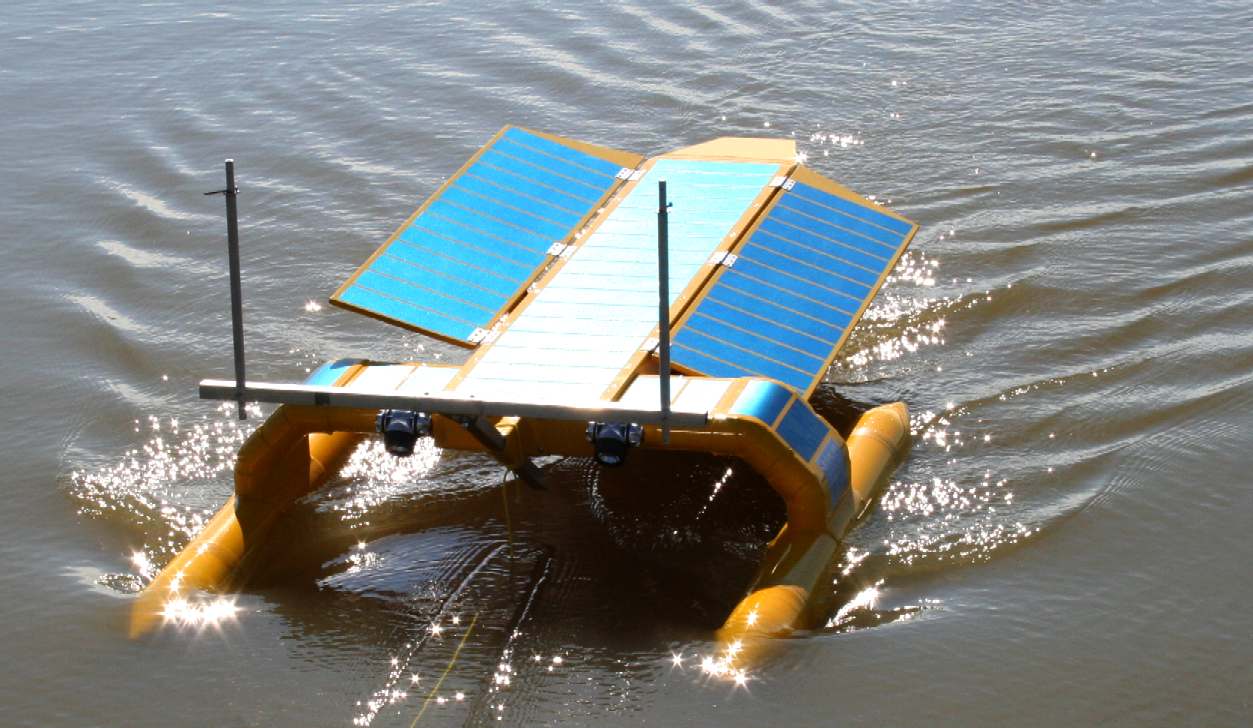
SEAVAX
= MARINE
COMBINED HARVESTER - The basic SeaVax machine is seen here as a proof of concept (working model).
It was designed to filter macro & micro plastics from seawater - in bulk, and recover ghost fishing nets of up to 150 tons. It was to be solar and wind
powered when conceived in 2015. Today, the vessel would need more power if a fleet of them are to deal with something like
24 million tons of sargassum a year. Around triple the 8 million ton
capacity envisaged for marine
litter. Any revised specification would probably need to include renewable hydrogen in the energy equation, something
akin to the Elizabeth
Swann concept, potentially the world' fastest hydrogen powered
ship.
We
imagine that every Caribbean island would want to own one of these, even if
capable of operating in fleet formation. Individual operators might take
charge of their own beaches, with advance information of sargassum landings
from SAT detection, to guide them. The SeaVax-Sargassso™ not only harvests
the macro-algae, but pre processes the haul. Depending on what the seaweed
is intended for. When used with AmphiMax-Sargasso™
amphibious beach launchers, islands do not need dedicated harbour
facilities. The system can operate from any beach.
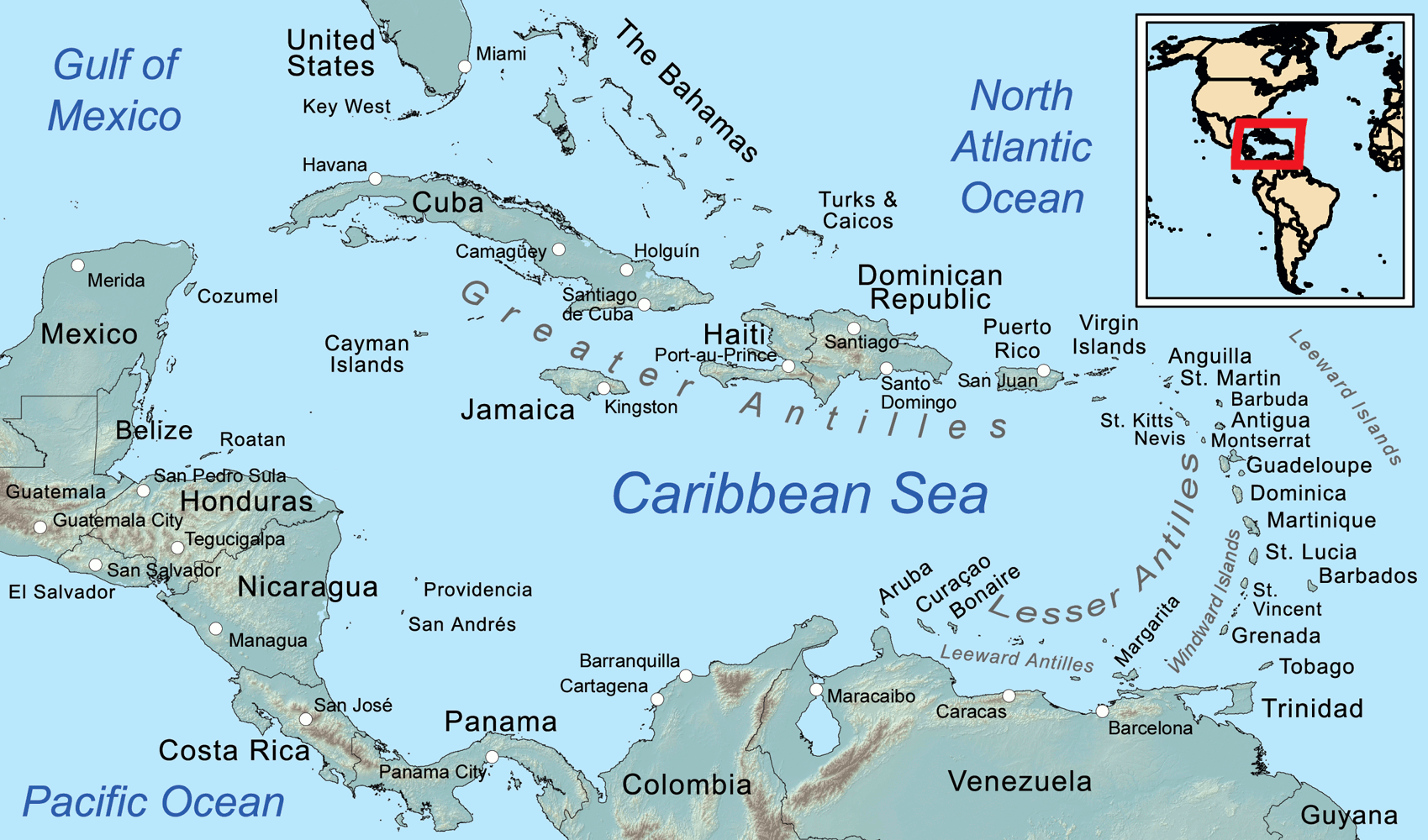
Map
of the Caribbean Sea, showing the Greater, Lesser, and Leeward Antilles, the
Leeward and Windward Islands.
The
Caribbean
Sea is littered with shipwrecks and dotted with dozens of paradise
islands, where pirates
are said to have buried their treasure.
Many island nations are at risk as to rising
sea levels, caused by climate
change, with the United
Nations powerless to deal with global
warming, being dependent on fossil
fuels.
CITIES
LOST IN INNERSPACE
ATLANTIS
- MEDITERRANEAN SEA
ATLIT-YAM
- ISRAEL
BAIA
- ITALY
DWARKA
- INDIA
PAVLOPETRI
- GREECE
PHANAGORIA
- BLACK SEA
PORT
ROYAL - JAMAICA
RUNGHOLT
- DENMARK
THONIS-HERACLEION
AND ALEXANDRIA - EGYPT
YONAGUNI
JIMA - JAPAN
|




